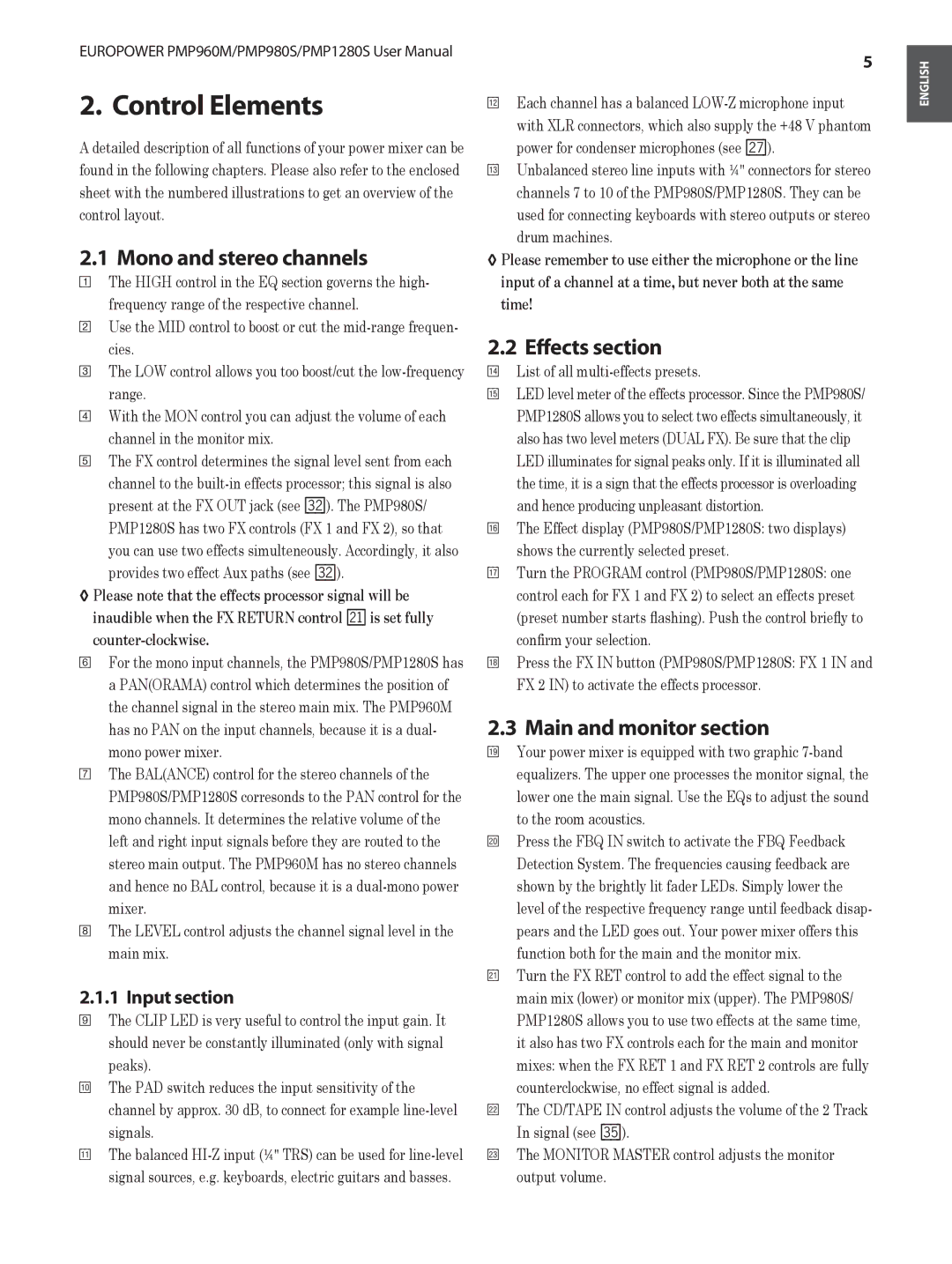PMP980S, PMP1280S specifications
Behringer, a renowned name in audio equipment, offers an impressive lineup of powered mixers, notably the PMP1280S and PMP980S. These versatile mixing consoles are designed to cater to musicians, bands, and live sound engineers who require robust performance and user-friendly features in a compact format.The Behringer PMP1280S is a powerful 12-channel powered mixer featuring an impressive total power output of 2 x 800 watts. This translates to ample headroom and clarity for live performances, ensuring that sound remains pristine, even at higher volumes. The mixer includes 8 mono channels with 3-band EQs, providing artists with control over their sound while maintaining simplicity. Each channel also features a built-in compressor to smooth out dynamic peaks and ensure a more consistent output. The PMP1280S is equipped with various onboard effects, including reverb, delay, and modulation, making it easier for users to enhance their sound without needing additional equipment.
On the other hand, the PMP980S, a slightly smaller powered mixer, boasts 8 channels and a power output of 2 x 500 watts. It retains many of the features found in the PMP1280S, including the 3-band EQ per channel, but is designed for those who need a more lightweight solution without sacrificing sound quality. This model also comes with built-in effects and a simple layout that makes it accessible for live performances, rehearsals, or presentations.
Both mixers utilize Behringer's proprietary Ultra-low Noise preamps, which are designed to produce high-quality audio while reducing unwanted noise. Moreover, the mixers feature a 24-bit digital effects processor, allowing users to create stunning sonic landscapes in real-time. Connectivity is another strong point, with multiple inputs and outputs, including XLR and TRS options for versatile integration with microphones and instruments.
The redundancy in power supply and thermal protection systems ensures that users can rely on these mixers during critical performances. Whether you're in a small venue or a larger space, both the PMP1280S and PMP980S provide exceptional performance, reliability, and a host of features that make them suitable for various audio applications.
In conclusion, Behringer's PMP1280S and PMP980S exemplify the brand's commitment to delivering professional-grade audio solutions that meet the diverse demands of modern audio professionals. With their powerful outputs, versatile effects, and high-quality components, these mixers are excellent choices for anyone looking to elevate their sound experience.

